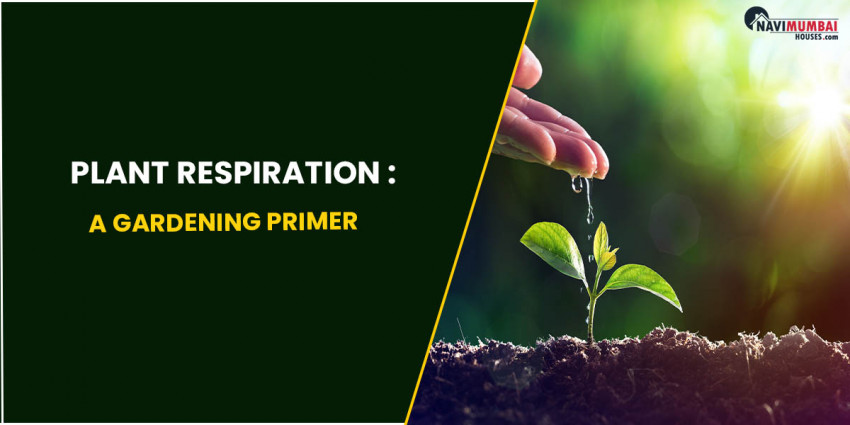
Plants inhale through the course of cell breath. Here's beginning and end you want to be aware.
Plant breath is a chain of substance responses that permits generally living things to get by orchestrating energy. The biochemical cycle works with air development between species' tissues/cells and the outer climate. The course of breath is finished by oxygen inward breath and carbon dioxide gas exhalation.
It assembles energy as a living substance through a metabolic cycle that oxidizes supplements and in this manner frees squanders. The cycles of breath and photosynthesis are connected. These two ideas are entwined and assume basic parts in plant development productivity.
Photosynthesis and breath are connected.
We are mindful that plants can blend their own food. Photosynthesis is the interaction by which green plants use daylight to change over carbon dioxide and water into glucose and oxygen. Plants utilize this figured out glucose for energy to endlessly get by. Be that as it may, how is this energy separated from glucose atoms? Plant breath, similar to creature breath, is a cycle that permits energy to be freed from macromolecules in food.
One more term connected with the subject is cell breath. It is a cycle wherein carbon-conveying mixtures, for example, glucose are additionally destroyed inside cells to free energy. The energy separated is put away as substance energy as the ATP atom. It represents Adenosine Triphosphate.
These put away mixtures that are destroyed are known as substrates/reactants, and the subsequent mixtures are known as response items. A few organic entities that can make due in low-oxygen conditions incorporate archaea and microorganisms.
These cells are a superb illustration of anaerobic breath, which includes crushing down particles without any oxygen. The associated atomic breakdown happens in a few plants and other residing organic entities where oxygen is available by means of an outright oxidation response known as high-impact breath.
As indicated by reports, glucose is the most ordinarily focused on substrate for cell breath. It is a straightforward sugar particle made out of six carbon iotas. Be that as it may, in a few remarkable cases, protein and fat particles can likewise be utilized.
As recently expressed, the synthetic bonds shaped between carbon particles are additionally broken during the vigorous breath process by a response with oxygen. Subsequently, energy, carbon dioxide, and water are delivered.
The energy delivered is then put away as ATP [Adenosine Triphosphate]. At the point when the cells require energy for different cycles, the Adenosine Triphosphate particles are separated to deliver the energy put away in them.
In any case, ATP particles are particular from other put away atoms like carbs or fats. Such particles give a speedy and simple wellspring of energy, especially for body cells. Besides, dissimilar to macromolecules, these atoms don't need as much energy to dismantle. Subsequently, ATP is alluded to as the "energy money of living substances."
Organelles carry out unambiguous roles in minor cells. Photosynthesis, then again, happens in plant cells in organelles called chloroplasts, which are regularly tracked down in the green pieces of plants. Chloroplasts contain the shade chlorophyll, which gives establishes their green tone.
Chlorophyll is a shade found in plant cells that permits plants to retain energy from daylight. Plants can now productively change over carbon dioxide and water into glucose and oxygen.
Plants, then again, breathe essentially through organelles known as mitochondria. Mitochondria are known as the "forces to be reckoned with of the cell" since they can rapidly change over glucose into energy for use on energy-containing particles like ATP. They can utilize the cells successfully later if essential.
On account of plants, photosynthesis and breath coincide, with the results of one providing the reactants for the other. Here are a few equations to assist you with grasping the hypothetical clarification of plant breath.
Plant Breath: A Hypothetical Clarification
Plant breath requires the sugars shaped during photosynthesis, as well as oxygen, to create energy for plant development. In numerous ways, breath is the converse of photosynthesis. Plants produce nourishment for endurance right at home.
Plants use carbon dioxide (CO2) from the climate to deliver sugars and oxygen (O2). These are then utilized as a significant wellspring of energy. Simultaneously, photosynthesis is restricted to the leaves and stems. Accordingly, breath happens in the leaves, stems, and foundations of plants. The accompanying chart portrays the plant breath technique:
C6H12O6 6O2 6CO2 6H2O + 32 ATP (Energy)
Plants' breath interaction
There is somewhat less gas trade when breath happens in various pieces of plants. Accordingly, each piece of the plant sustains and meets its energy needs. Therefore, individual plant parts like leaves, stems, and roots trade gases.
Stomata [tiny pores] in leaves are expected for vaporous trade. Stomatal oxygen utilization is utilized by cells in the passes on to separate glucose into water and carbon dioxide.
Roots' breath
Roots are the plant's most underground part, consuming air from the holes or spaces between soil particles. Accordingly, the oxygen consumed by the roots is utilized to create energy, which can then be utilized to ship salts or different minerals from the dirt.
We've gabbed about the photosynthesis cycle and plants' capacity to deliver food. Notwithstanding, it just happens in the pieces of the plant that contain chlorophyll, which are normally the greener pieces of the plant — there are numerous misinterpretations about plant breath for photosynthesis.
Breath happens over the course of the day, however photosynthesis happens just during the day with the assistance of daylight. Therefore, breath happens in plants around evening time.
It's conceivable that is the reason we frequently hear individuals say that dozing under a tree is an impractical notion around evening time. It might make suffocation due the exorbitant carbon dioxide created by trees during the breath interaction.
In stems, breath happens.
The air presented to the stem spreads into the stomata and travels through different cell parts for breath. The carbon dioxide delivered is likewise removed through the stomata as of now. Lenticels trade gases, particularly in woody or higher plants.
Leaves' breath
Leaves are thickly loaded with small pores known as stomata, through which typical vaporous trade happens. In the mean time, monitor cells keep the stomata in a state of harmony. At long last, the gas trade process happens with the stoma shutting and opening, associating the sub-par passes on to the environment.
The Significance of Air Temperature
Plants inhale 24 hours every day, seven days per week. Night breath is noticeable, nonetheless, as the photosynthesis cycle is finished. Since the plants might encounter pressure sooner or later during the evening, the temperature should be kept a lot of lower than during the day.
Take, for instance, a long distance runner. While running, the individual inhales quicker than while stopping. Thus, a sprinter's breath is expanded, and their internal heat level ultimately rises. A similar guideline turns out as expected for plants. As the evening temperature increases, so does the breath rate, and comparative temperature climbs. Thus, it might hurt the blossom or result in unfortunate plant development.
Source From:- navimumbaihouses






